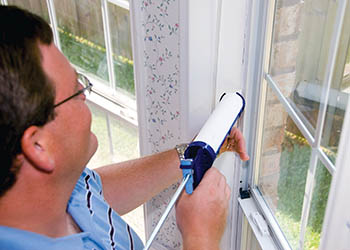Cleaning throughout your home can make a big difference in your energy consumption, helping you save energy and money. Perform these simple steps this month to ensure your home is as clean and energy-efficient as possible.
Clean your air ducts and vents
Cleaning out all the accumulated dust and dirt makes things easier for your lungs and your heating and cooling systems. You will save energy and may even increase the system’s lifespan.
Seal any air ducts and leaks
Caulking, sealing, and weather-stripping cracks and openings around your windows, doors, or any other openings can help keep air from leaking out of or into your home, helping your heating and cooling systems run efficiently. Leaky air ducts can reduce the efficiency of heating and cooling systems by up to 30%.
Clean the sliding door track
If your home has a sliding glass door, clean out the track. Dirt and grit in the track can ruin the door’s seal and create gaps where air can escape.
Get out your duster
Dust keeps electronics and motors from running at top efficiency. Dust off your computer, office equipment, electronics, lightbulbs, and refrigerator coils.
Replace your air filters
Replacing dirty air filters with new, clean filters will improve airflow and increase the efficiency of your HVAC system. This simple step could lower your energy consumption by up to 15%.
Have your HVAC system serviced
Having your heating and cooling system inspected, cleaned, and serviced at least once a year helps ensure it’s working at maximum efficiency.
Switch to energy-efficient lighting
Did you know LED bulbs use at least 75% less energy and last 25 times longer than incandescents? Swapping out your incandescent bulbs for LED bulbs can save a ton of energy and money over time. LEDs also emit very little heat, so they can help keep your home cooler as the weather gets warmer.
Turn down your water heater
Water heating accounts for 18% of the average utility bill. Turning down the temperature of your water heater to the warm setting (120 F) can help reduce your energy consumption.
Change the direction of your ceiling fans
Once it starts getting warmer, switch your ceiling fans to rotate counter-clockwise so that they push cool air down. This will keep your home cooler and allow you to ease up on the AC.
Information courtesy of CleanChoice Energy




